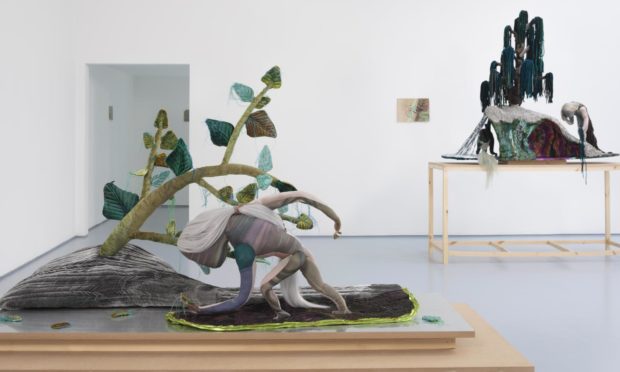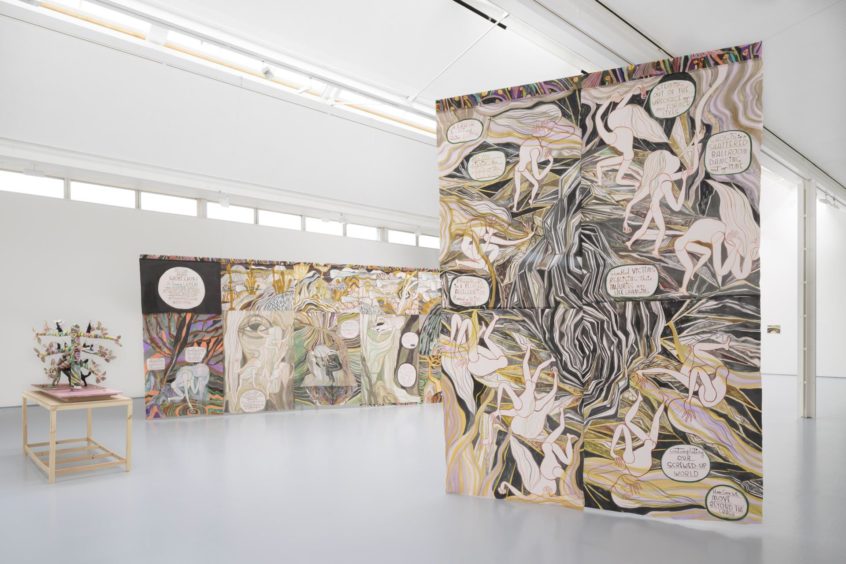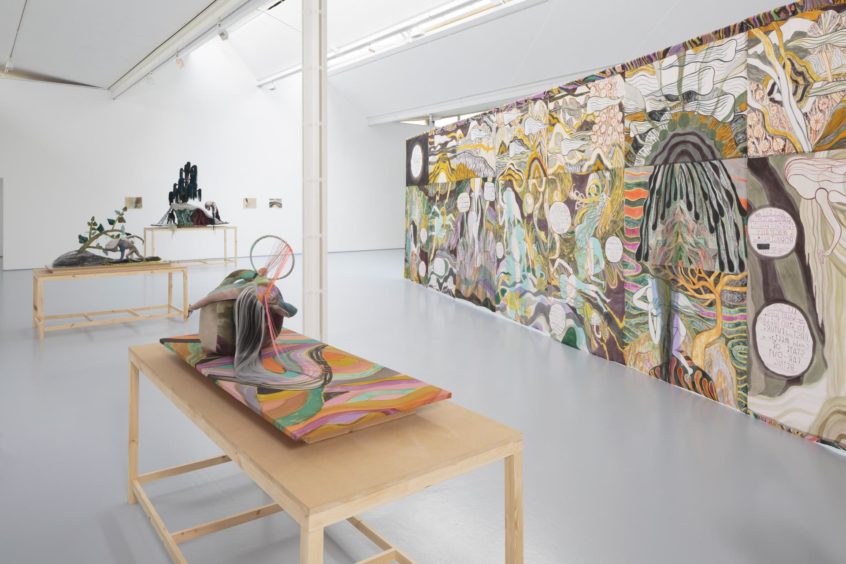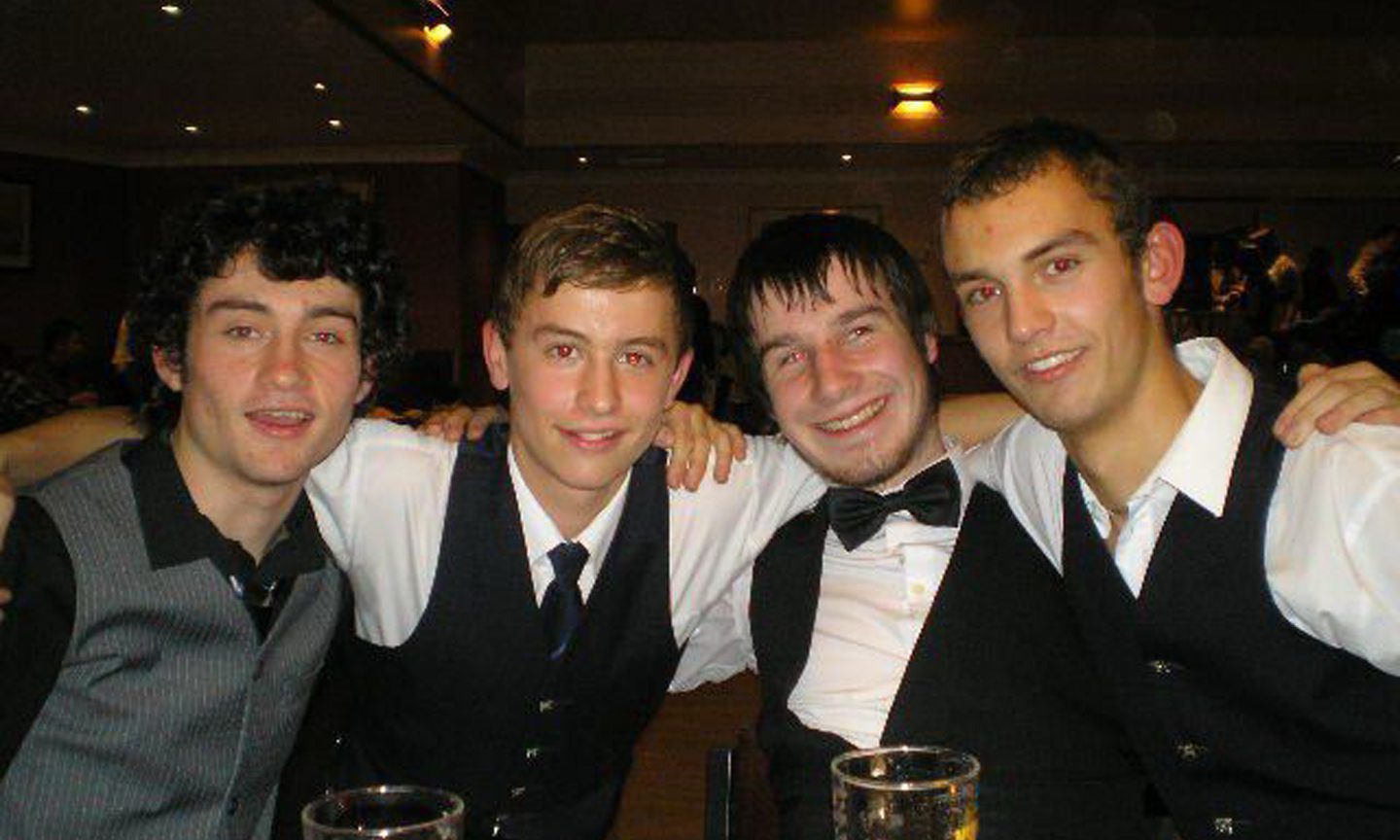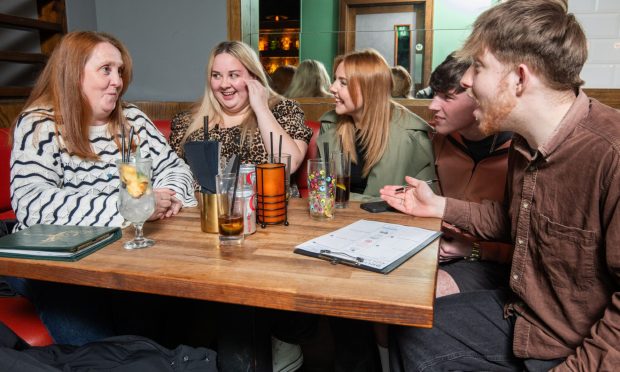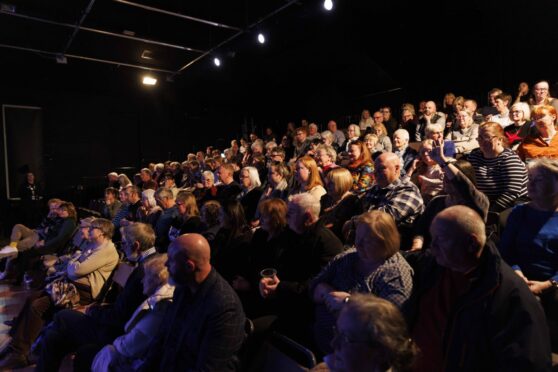“We have the most remarkable show, and it’s been installed since December,” says Beth Bate, director of Dundee Contemporary Arts, “Which means it’s the longest-running show we’ve ever had at DCA – except nobody’s seen it yet.”
The DCA is looking forward to finally reopening at the end of this month. Unlike most other arts and performance institutions in Scotland, art galleries were allowed a brief period of between-lockdown reopening last autumn.
Until very close to its already-delayed reopening in December, it appeared Ghost Calls – DCA’s major new exhibition from rising, London-based artist Emma Talbot – might actually go ahead as planned.
“Of course, it became clear that wasn’t going to be the case,” says Bate, “so it’s all been carefully protected and kept dust-free, waiting for us to be able to open the doors again. It’s quite strange having a show called Ghost Calls in place, in this empty building, waiting for our audiences to return again.
“It’s the most perfect exhibition to be reopening with, though, as we start to think about what our new world looks like as we move out of lockdown. Emma is the most wonderful teller of stories, she brings together so many rich influences.”
“It’s so strange,” says Talbot, on the line from her home in London, of the knowledge that an exhibition of hers has existed for months, but that no-one has seen it yet.
For Talbot, a completed but unseen body of work like this creates a strange feeling of limbo. “An audience viewing it is what completes the work for me,” she says. “You make the work knowing you want others to see it and to be able to engage with it, and that’s the important part, that you hope your work really communicates to others.
Sitting in the space without any viewers
“So we installed the show in December, and the team at DCA were so lovely to work with, and then we didn’t have an opening. The work is sitting in the space without any viewers, and it feels like it hasn’t completed its journey. I really can’t wait to be able to share the work with those viewers, because it’s what I always had in mind while I was making it.”
Bate first saw Talbot’s work in 2016 at the MAC (Metropolitan Arts Centre) in Belfast, a venue very much like DCA, where it was being shown as part of the MAC International Ulster Bank Prize.
The following year MAC’s curator Eoin Dara took up the same role at DCA, although Bate was considering Talbot’s work for a show at the spacious gallery in Dundee from the moment she saw it.
Synchronicity at work
There’s also another synchronicity at work here, which adds to the sense that Ghost Calls is long overdue. Just a few days before lockdown began, a little over a year ago, Talbot was named as the winner of the 2020 Max Mara Art Prize for Women, which is awarded to UK-based women artists who have never had a major solo exhibition.
Educated as a painter at Birmingham Institute of Art & Design and then the Royal College of Art during the late ‘80s and early ‘90s, Talbot has steadily worked and exhibited since, as part of group shows across the world and with small solo exhibitions in England, Germany and Holland (a 2019 group show named All That the Rain Promises at Edinburgh’s Arusha Gallery is her only previous Scottish appearance).
Yet between the award and this show, maybe a turning point has been reached – albeit one which has taken 12 locked-down months to navigate.
“Her work really struck me immediately,” says Bate of Talbot’s art, which in this case centres on a brand new, 15-metre-long painting on silk which bears the same name as the exhibition itself. “I was fascinated by these beautiful, deeply personal, delicately painted insights into a very private interior world.
Her work…was looking at loss, at parenthood, at loneliness, at domesticity, at being a mother.
“The way she paints directly onto silks is really strong and really striking. I was also interested that she was telling women’s stories, she was talking about the thinking and internal spaces of women. Her work at that point was looking at loss, at parenthood, at loneliness, at domesticity, at being a mother.”
There’s an unavoidable poignancy, in this context, to the fact that Talbot is both a mother and a widow.
“It was incredibly powerful, and absolutely beautiful,” continues Bate. “I remember (her silk paintings) looked almost like stained glass, hanging from the wall. It was clear she could do something really wonderful in DCA’s spaces, which are very large and airy.”
That Talbot would work with DCA was becoming apparent some years ago, but it was in 2019 that plans really progressed, with the artist visiting Dundee for research.
Made for Dundee, researched in Dundee
“I had a period of time of going to Dundee to look at the space and research what kinds of things I’d like to do for the show,” she says. “The work was all made with DCA in mind, and they were really generous, they let me come up and spend some time.
“I went to various places, including the McManus, I did a lot of research there in an open-minded way, I didn’t really know what it was I was going to make, but what I kept thinking about the artefacts that I saw in the McManus and the incredible Scottish landscape. As the time came that I was making the show, we were going into lockdown, and I was thinking about how we were really missing the outdoors and missing what our lives were like previously.”
“I was really thinking about us being in a period of enormous change, where all the structures that we’re used to had fallen away, and we were in a moment of crash
While the idea of a global pandemic was on virtually no-one’s horizon when Talbot first began to conceive this work, eventually it was all anyone could think about, herself included.
“I was really thinking about us being in a period of enormous change, where all the structures that we’re used to had fallen away, and we were in a moment of crash where we had to reconfigure everything,” she says.
“What we’d really love to connect with more, I thought, was that landscape, and so I wanted to bring this enormous Scottish landscape into the space at DCA.
“I’ve made a silk painting which is 15 metres long, it’s about that Scottish landscape, but it’s also a psychological landscape. It’s about us coming out of the crash experience of the pandemic, and moving towards what might be a hopeful future, but in doing so also grieving the life we used to have, and thinking about the process of changing and about what we had before.”
Pictish and Celtic references
“So the exhibition takes on an idea of layered time, it has references to very early artefacts that I saw in the McManus, like Pictish carvings, and to Celtic patterns and Celtic revival paintings that I saw there too.”
The show includes the large Ghost Calls painting and a smaller silk work called A Crash in Fast and Slow Motion, with a series of papier mâché and fabric sculpture forms and animations which complement the work and are, she says, “like drawings made into three dimensions. If you paint on silk, if you make a mark, you can’t take it off, so it’s very direct – what you make first time is what there is, you know? I feel that gives me a freedom, but there’s also a lot of pictorial imagery and a lot of text in the work which I write myself. It’s like a conversation with the viewer, it’s asking questions and posing different thoughts.”
Connections with the past
Like the rest of us, Talbot has had a lot of time to think recently, and new ideas of the personal and the social have been overwhelming.
“The Ghost Calls name is about an idea of different times, different eras, being able to communicate with us,” she says. “For example, if we look at the 21st Century so far, it looks very much like the beginning of the 20th Century; there was a pandemic then, there was a huge gulf between people with wealth and people without, there was a financial crash, there were similar political structures, the rise of the right and so on.
“If that century might then call out to ours to say, ‘look out for what might happen’, then I thought we might also hear these things in a landscape like Scotland’s, in these carvings from ancient cultures, as if they’re presences of other times that can guide us and tell us how we might want to live.
“My work always has a relationship between the fact that we all have our own private, internal narrative, and the fact these are in the world, that we’re all citizens of that world,” she concludes.
Speaking to Beth Bate about the reopening of the DCA once more, there’s a sense of a mixture of emotions, albeit ones which seem overwhelmingly positive. She sounds confident the measures put in place for last year’s reopening – although hard work for all DCA’s staff – were safe and overwhelmingly approved of by visitors; cautiously excited that new remote technologies like offering cinema screenings, workshops and gallery tours remotely online are here to stay; and relieved to be almost back in business.
“For me, there’s a deep theme of connection in Emma’s work,” says Bate. “About how we’re connected to our very ancient histories through our shared cultures and through each other – the last few months have really demonstrated, in a whole variety of sometimes very difficult ways, how absolutely essential those shared connections are, and I’d hope audiences coming to see Emma’s show feel their experiences are reflected through the show they’re seeing, and that they’re hopefully able to talk about them with their friends and family.
Emma Talbot: Ghost Calls is at Dundee Contemporary Arts, from Wednesday April 28 to Sunday August 8. www.dca.org.uk
